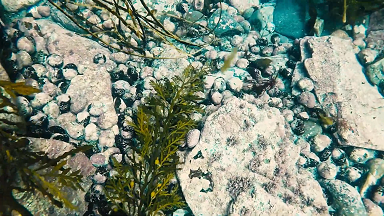Background
The First Custodians
Periwinkles were a popular traditional food source for Tasmanian Aboriginal people, particularly in Northern Tasmania since their arrival to the island over 35 000 years ago (Brimfield 2011; Cameron 2006; Breen 2015). Evidence of periwinkles in the diets of Tasmanian Aboriginals can be found by shells observed in middens located around the state (Cockrill, 2018; Norwood 1999).
Establishment of Commercial Fisheries
The commercial periwinkle fishery has been operating in Tasmania for almost 40 years as part of the Commercial Dive Fishery. Commercial catches have fluctuated throughout the history of the fishery, largely as a result of fishers entering and exiting the industry and/or switching targets to fish alternate species. Most of the catch is taken from the south-east and north-east coasts, with catch rates higher in the south-east than the north-east.
Prior to the implementation of the Commercial Dive Fishery Management Plan in December 2005, the only data available about the fishery was catch volumes, with no data recorded on fishing areas or effort during this period. The implementation of the management plan included a requirement for fishers to report fishing location/fishing block/fishing zone and daily catch data with effort (dive hours) reporting becoming mandatory at the commencement of the 2007/2008 season. Under the management plan, a total allowable catch (TAC) of 35.2 tonnes split evenly over two management zones (Developed Zone in the south-east and an Undeveloped Zone covering remaining waters). Despite the implementation of the Commercial Dive Fishery Management Plan in 2005, a general lack of information on the biology and population structure of the periwinkle necessitated that a precautionary approach be adopted when setting the catch limits and, furthermore, the minimum size limit that was implemented at the time had no scientific grounding.
Periwinkle Fishery of Tasmania: Supporting Management and a Profitable Industry
Between 2011 and 2014, IMAS researchers conducted the first comprehensive study of the fishery, fisheries biology and markets for the edible periwinkle, Lunella undulata for FRDC project 2011/024. The study provided an assessment of the status of the periwinkle resource in Tasmania, determined size at maturity and growth to provide a basis for setting biologically meaningful minimum size limits, evaluate market potential to maximise economic returns, and to produce a report card to aid in the sustainable development and management of the fishery.

You can read the full report on the Periwinkle by Keane et al. (2014) at the link:
Assessment of the periwinkle fishery by IMAS researchers in FRDC project 2011/024 found that the resource was under-utilised with large sections of coastline having minimal to no catch taken and the zoning implemented with the initial management plan in 2005 was restricting the development of the fishery into under-utilised areas (north and west coasts). In response, the fishery was rezoned for the 2013/14 season (September to August) with the Undeveloped Zone split into three (North-east, Northern and Western Zones) and the statewide TAC increased to 52.8 tonnes to facilitate development on the north and west coasts. More information on the current fishery management and zoning can be found on the Fishery Management page.
Learn more about some of the research IMAS are conducting on periwinkle and other dive fisheries here:



